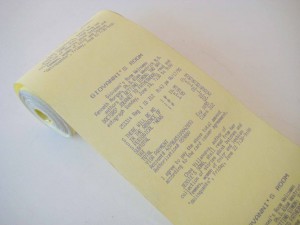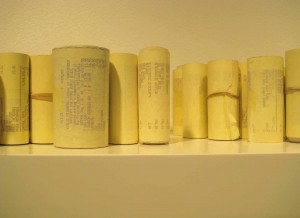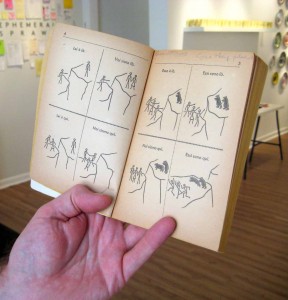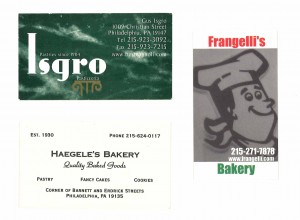


Emmett Ramstad
1995, 2013
Cash register receipt rolls from Giovanni’s Room bookstore, Philadelphia
Collection of The John J. Wilcox, Jr. LGBT Archives,
William Way LGBT Community Center, Philadelphia
“My Aunt Mary told me about Giovanni’s Room bookstore when I said I was moving to Philly. She used to buy lesbian crime novels by mail order from them before Amazon Bookstore (not the online store, but the real lesbian bookstore in Minneapolis, named after strong, one breasted women). When I arrived in Philly, I visited Giovanni’s Room and Skip, a long-time employee, remembered Aunt Mary’s name from the mail order days – days of newsletters with book prices, a phone number you could call and books slipped into brown envelopes for shipping. This is the story I think of when I look at the many boxes of ephemera that Giovanni’s Room donated to The John J. Wilcox Jr. archive. When I asked Ed, Giovanni’s Room owner, about exhibiting the cash register receipt rolls, he was worried they would reveal the identity of the patrons- exposing secret purchases in the form of abbreviated titles of porn mags and disappointing gay films that are either too sweet or too brutal. He consented to the exhibition when I assured him there are no names on the receipts, just numbers, abridged titles, and events listings. These documents remind me of clusters of bodies and people with nerdish impulses, like a beautiful pre-internet community finding themselves; they represent a collection of book and magazine buyers and people who bought rainbow stickers for their cars. They also remind me of the hours I spent in the bookstore pouring over a filthy Sam Steward book I wanted but was gone by the time payday came around, and of cramming into a the attic like upstairs for queer readings. And while I was writing this, Ed announced retirement and Giovanni’s Room might have to close its doors. Is the era of gay bookstores now over? Who will take down Aunt Mary’s name and address when she buys her lesbian crime novels?”
– Emmett Ramstad







